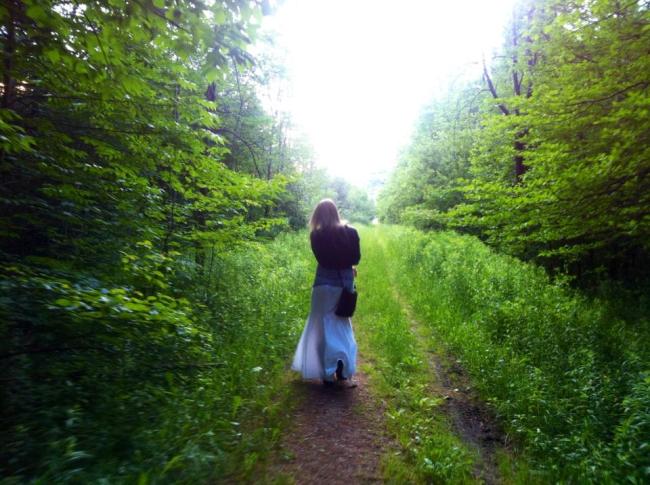2013 in review, yay! Nature, happiness, joy, triumph of the soul, financial and spiritual freedom, a life of blissful … Wait, never mind. Let’s cut the crap. Some of my decisions worked out in the end, some didn’t. All of my decisions were a result of naivety and experience, knowledge and ignorance, broad mind and dogmatic preconceptions. There may be stuff in here that’s useful in a wider sense, but these were the things that worked (and didn’t) for me. You may find that spending major holidays in the forest isn’t your thing – in which case, my advice below cannot be held responsible for your mosquito-induced misery to come.
So, here goes:
1. Spend All Major Holidays … And Any Other Days in Nature

“Not all those who wander are lost.” Mr. Tolkien, how did you just so perfectly express the entire philosophy of my life? Photo taken by Anthony Dewar, the only person in this world, who can magically transform me from an awkward squirrel into a somewhat elegant human-being. Canada Day in Copeland Forest, 2013

Oh no, never mind, here’s that awkward squirrel again. Photo is still by Anthony Dewar. Christmas in Copeland Forest, 2013
Want to understand design from functional, aesthetic and experiential perspectives? Let’s start with the idea that we can experience all these phenomena, the objects and the events of the world, as they show up during your walk through a forest. The experience of the world ‘just as it is’ often requires significant attention, the quieting of the mind, the relaxation of the body, and the suspension of preconceptions. These are the skills you will learn not by studying ‘about’ nature, but learning ‘from’ nature during your walk in a forest. Once a designer can fully intake the unfiltered experience of sun and wind, light and shadow, damp and dry, fragrant and fetid, patterns of function, aesthetic, and experience begin to emerge. This is the beginning point for designing objects, spaces, systems, and experiences that engender and facilitate thoughtful solutions.



